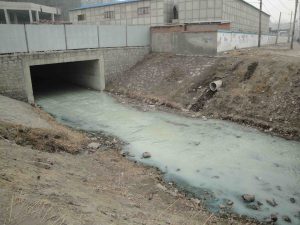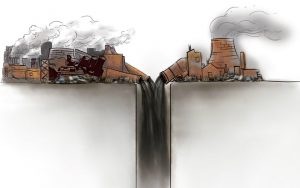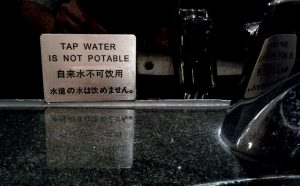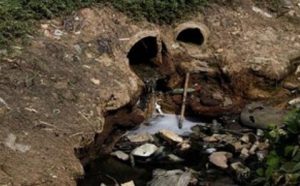Water pollution scandals in the cities of Lanzhou and Wuhan have put China’s urban tap water supplies back in the spotlight, but a far more serious drinking water crisis is playing out in the countryside, a senior health researcher has warned.
“Generally speaking, tap water is safe for use, despite quality failures from time to time. When we talk about a drinking water crisis, the real danger lies in China’s vast rural areas,” said Zhao Feihong, director of the Beijing Health Association Professional Committee for Drinking Water. “Remote rural areas tend not to have tap water supplies and the water people use is not properly processed. Agricultural chemicals, faeces and other pollutants can easily enter the drinking water.”
Despite more than three decades of rapid economic growth in China, 110 million rural residents still lack access to safe drinking water, according to figures confirmed by vice-minister of water resources Jiao Yong. It’s a problem receiving high-level attention: premier Li Keqiang set a goal in this year’s government work report to clean up drinking water for 60 million rural residents, and the government has vowed to provide its entire rural population with access to safe drinking water by 2015.
But China’s ability to guarantee safe drinking water even to its city dwellers has been cast into doubt in recent years and the latest pollution incidents in Lanzhou and Wuhan serve as fresh reminders of the challenge across the country.
In late April, excessive levels of ammonia and nitrogen were found in Wuhan’s major water source, the Hanjiang River, resulting in supplies to more than 300,000 people being cut off. Just two weeks earlier, toxic chemical benzene entered Lanzhou’s tap water system, forcing the Gansu provincial capital to switch off its water supply for three days.
The slew of scandals has stirred high levels of public concern. In an online survey conducted by China Youth News following the Lanzhou pollution incident, nearly 78% of respondents said they were worried about tap water safety, while more than 90% said they had no way of assessing the quality of their tap water.
Their complaint has grounds – only 113 cities’ drinking water quality data can be publicly accessed, leaving many thousands of cities, towns and villages in the dark about the water they use. Chinese newspaper Southern Metropolis Daily has argued that this lack of public data and consequential absence of public scrutiny is constraining the ability of the country to improve drinking water quality.
“If people don’t know what’s in their drinking water, they won’t care. And if they don’t care, the authorities won’t care,” said Zhao Feihong.
More pollution scandals to come
Liu Wenjun, a drinking water safety researcher at Tsinghua University who has long advocated water conservation and pollution control, told 21st Century Business Herald that water crises will become more frequent if the government fails to curb polluting activities.
Such warnings have been heard before. Speaking in 2009, Fu Tao, also at Tsinghua, told China Business News the country would soon enter a developmental stage of “intensifying” accidents related to water quality. “China’s water sources have been severely polluted and its water facilities are out of date, therefore, the pressure of supplying safe drinking water will increase steeply,” he predicted.
His fears are playing out: a report published by the country’s land and resources ministry in April found nearly 60% of underground water samples collected from across 203 cities to be “relatively poor” or “very poor”. The figure for the North China Plain, where the country’s capital Beijing lies, is more than 70%. And official statistics quoted by Economic Information Daily show more than 1,700 water pollution related cases were recorded every year in the past few years. Around 280 million people across the country are exposed to unsafe drinking water, according to a pollution survey conducted by the environmental ministry.
Whether the government is looking to provide the rural population with access to safe drinking water or to improve tap-water quality for city dwellers, the cost will be high. Official data shows that from 2005 to 2012, about 180 billion yuan (US$28 billion) was spent on drinking water safety projects. And China is committed to spending 46.5 billion yuan (US$7.5 billion) on water-plant upgrades in the 12th Five Year Plan period, which ends next year.
The authorities have hoped price reform and marketisation can ease the financial burden, but Lanzhou’s benzene pollution incident has raised questions about this strategy.
“Many local governments simply equate public enterprise reform with privatisation, thinking they can fold their arms, stand by and let market mechanisms take control. But little do they know that public enterprise reform without construction of a legal system and proper scrutiny mechanism could cause more problems,” said an opinion piece on Xinhua Daily Telegraph.
Zhao Feihong is also concerned that China is relying too heavily on market mechanisms to meet the challenge. “Personally I disagree with the current direction of our water business reform. Price hikes and privatisation will not solve our quality problem…Much of the money collected through price hikes is spent on administration costs rather than upgrading equipment.”
“Water is a common good, and providing safe drinking water to the public is the most basic duty of a government.” she said. “The government should not shift responsibility away.”







